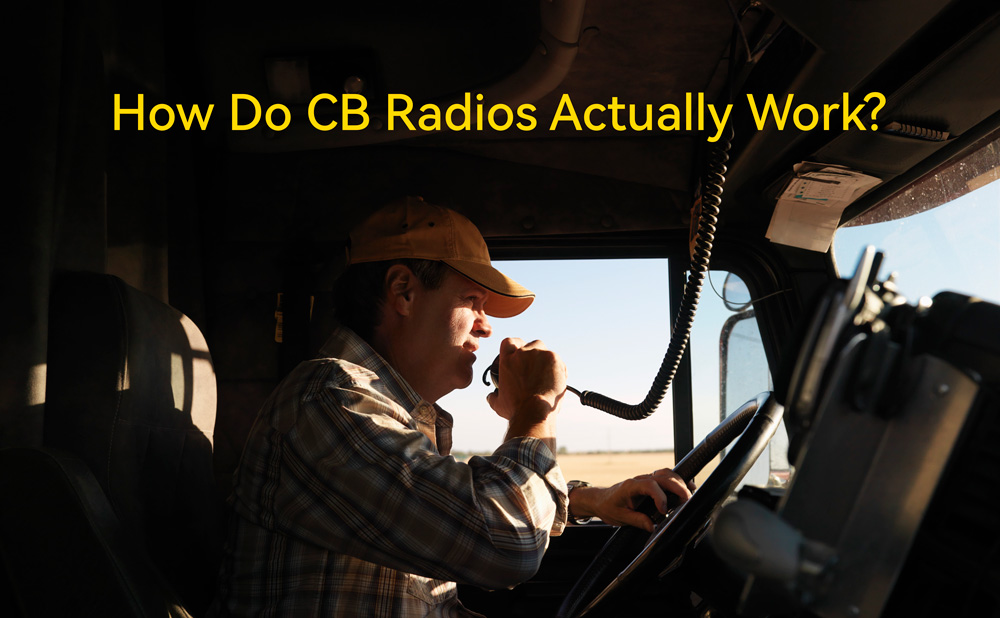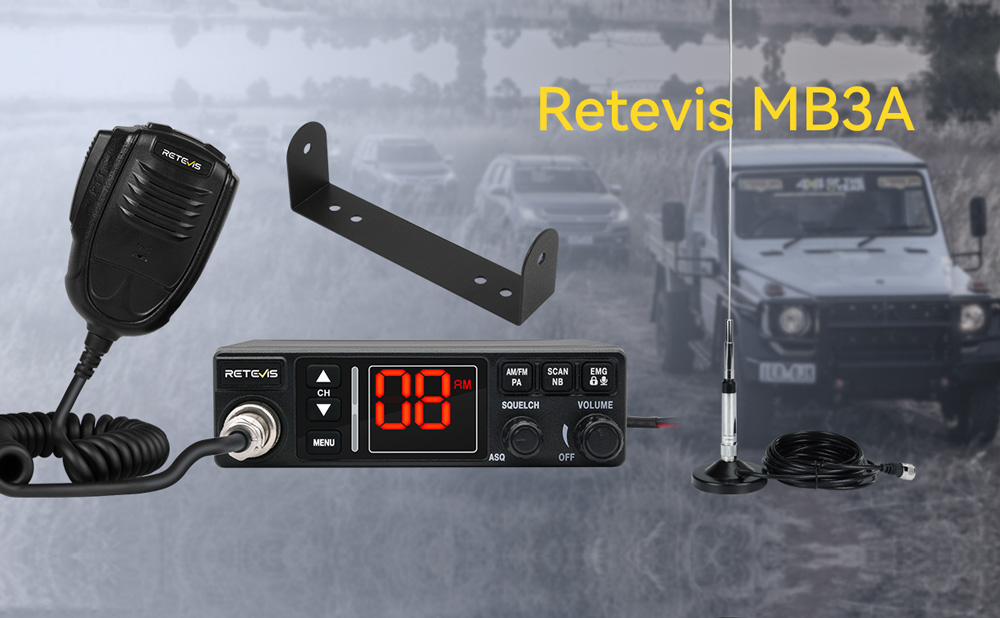How Do CB Radios Actually Work?

How Do CB Radios Actually Work?
The frequency used is 27 Megahertz. It's an analog radio and as such works in an analog way. It's a broadcast and half-duplex transmission, so one user talks, and an infinite number of people can listen.
The utility of the CB is just this: with the push to talk, you just press a button to activate the communication, and an infinite number of people, who are within the radio coverage range, can listen.
Moreover, CB is limited to the area where you are, therefore it's essential for exchanging information about traffic.
The antenna, which is 75 cm to 150 cm high, transmits omnidirectionally (circular), and all the people I can reach with my radio range, listen to my voice immediately.
Regarding the practical use by the users, it's just as simple, because all the controls and buttons are present on the front part: they are used to increase or decrease the volume, cancel background noise, and modify the Squelch, search for channels, and display them.
A CB radio serves as both a transmitter for sending messages and a receiver for receiving notifications, so it is actually a transceiver.
The operation of a CB radio is centered on the radio antenna because the antenna sends and receives the signal being sent by your CB radio unit. The radio antenna holds two basic functions:
1) It captures radio-frequency signals (radio waves) and converts them to electrical signals (the voices we hear on incoming transmissions).
2) It converts electrical radio signals from the transmitter into radio-frequency signals (turning voices into radio waves for an outgoing transmission).
Tuning the antenna is crucial because the antenna length must precisely match the wavelength of the transmitted radio frequency for transmissions to be sent effectively.
The quality of both the signal received and the audio transmitted is largely determined by the antenna. Calibrating the CB antenna with a standing wave ratio (SWR) meter is an essential step. Because mountains and buildings can interfere with CB radio signals, the highest quality transmissions are between radio stations that have a clear line of sight.
CB radios operate only at a specific frequency, so there are a limited number of channels on which to broadcast. In the United States, there are 40 CB channels, and operators can broadcast on any channel they wish. The only exception is Channel 9, which is limited to emergency communication.
Because of the way a CB radio works, only one speaker can broadcast on a channel at a time. And even though CB radio is completely anonymous, broadcasts on your CB radio station will not be private, and anyone tuned into that channel can hear you.







